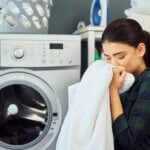Disinfectants play an important role in the prevention and control of infectious diseases in order to protect public health. The EN14476 standard provides a standard guideline for testing the efficacy of chemical disinfectants and antiseptics for their virucidal activity. This article aims to explain the EN14476 testing method in detail and discuss its significance and impact on public health.
EN14476 for disinfectant testing
EN14476 is a European Standard that specifies the methodology to validate the virucidal (virus-inactivating) properties of chemical disinfectants that are used in the human medical environment. This standard applies to products that require an antiviral activity claim and covers various forms of application including hand rubs, surface disinfection, and instrument disinfectants.
Importance of the standard
The EN14476 standard is very important because it provides a methodological protocol to evaluate the effectiveness of disinfectants against viruses ensuring that products on the market are both safe and effective for controlling virus spread in healthcare settings. This standard is especially necessary in the case of outbreaks of viral diseases where effective disinfection practices are essential for controlling disease spread.
Testing conditions and requirements
Test organisms: The standard specifies the use of specific virus strains including highly resistant non-enveloped viruses such as Poliovirus, Adenovirus and Norovirus and enveloped viruses such as Vaccinia virus.
Performance criteria: A disinfectant must demonstrate at least 4 log reduction (99.99% antiviral activity) in virus titers under the conditions of the test to be considered effective.
Procedure
The EN14476 test involves a quantitative suspension method to evaluate the virucidal activity of disinfectants. The test analyzes the reduction in the viable count of test virus by the disinfectant under defined conditions of application, concentration, and contact time.
Preparation: Virus suspensions and test concentrations of the disinfectant are prepared. The virus suspension is mixed with disinfectants in a specific ratio.
Contact time: The disinfectant is allowed to act on the virus suspension for a specified time.
Analysis: After exposure, the virus-disinfectant mixture is neutralized and quantitatively analyzed to determine the number of infectious viral units present in it. The log reduction in the virus titer is calculated.
Significance of EN14476 standard in public health
Impacts in the healthcare sector
Testing disinfectants using the EN14476 standard assures that only efficient products having at least 99.99% of antiviral activity are used in the healthcare and medical sector. This is very essential for preventing the spread of viruses that might occur during medical procedures and patient care activities.
Role in infection control policies
Products having EN14476 certification are very important for infection control in times of sporadic infection, epidemics or pandemics. This certification provides confidence to healthcare personnel that they can rely on these products to ensure environments are free from viral pathogens.
Regulatory and compliance implications
The EN14476 standard for testing disinfectants is often necessary for regulatory approval to gain market access and can affect purchases made in healthcare facilities. This ensures that products meet the basic requirements for virucidal efficacy.
Antiviral activity spectrum
The EN14476 test is done with both enveloped and non-enveloped viruses and it tells us regarding the spectrum of virucidal activity of the disinfectant. The disinfectants may be declared to be limited spectrum or broad spectrum depending on whether it is able to act upon viruses like polio virus or parvovirus.
Efficacy in real situations – EN14476 for disinfectant testing
EN14476 is a standard protocol for testing the antiviral activity of disinfectants. The effectiveness of these disinfectants might vary in real situations due to various factors that affect the results in the medical field. These factors are the product application, environmental conditions, and the specific viruses. To counter these issues, the test is performed using varying concentrations of disinfectants with varying contact time under both clean and dirty conditions.
The EN14476 standard is very important for preventing infections mainly in the medical field. Setting strict references for virucidal efficacy ensures that the disinfectants used in places susceptible for virus spread are both effective and reliable. This helps protect public health from viral diseases. Manufacturers, healthcare providers, and regulators need to understand and follow this standard to maintain high standards of infection prevention and control.
Why Microbe Investigations?
Microbe Investigation Switzerland (MIS) specializes in comprehensive microbe testing services, with a strong emphasis on disinfectant efficacy. Using cutting-edge techniques and adhering to strict standards like EN14476, we deliver trustworthy and precise results. Whether you operate in healthcare, education, or manufacturing, our services are tailored to suit your needs, empowering you to make informed decisions about the products safeguarding your environment.
Contact MIS today to begin your journey toward verified and effective disinfection solutions.









